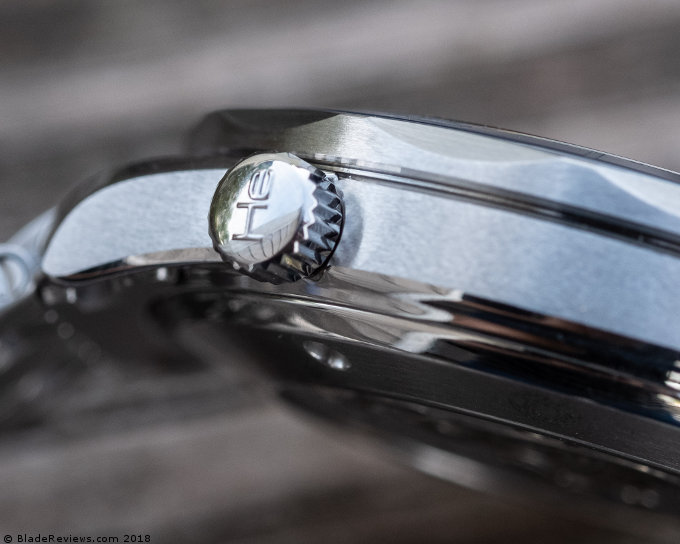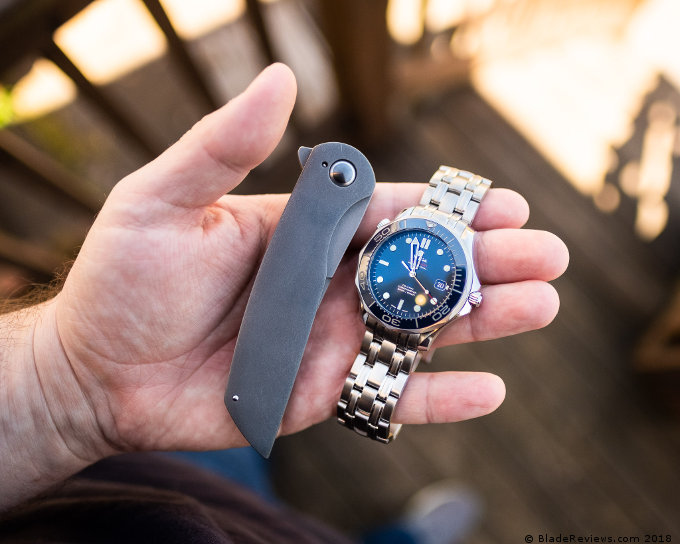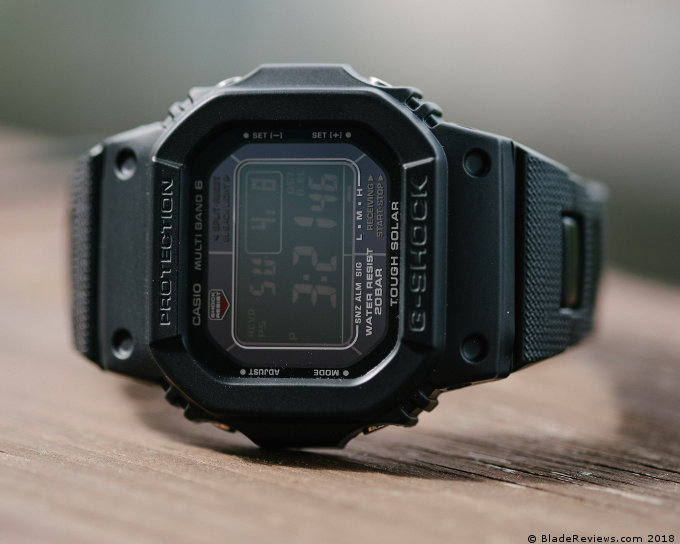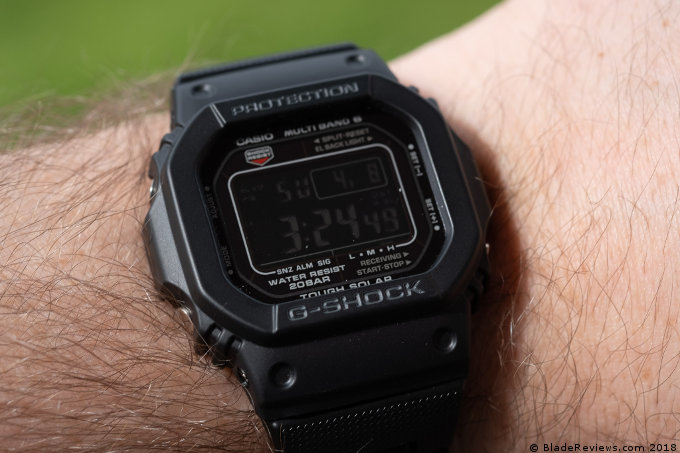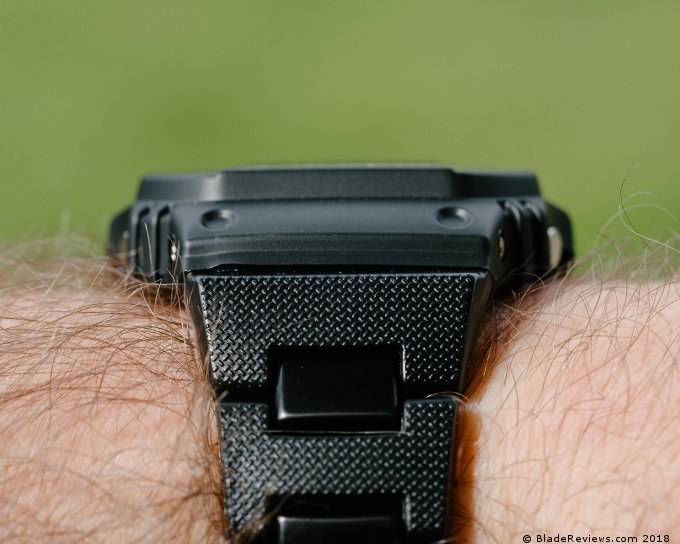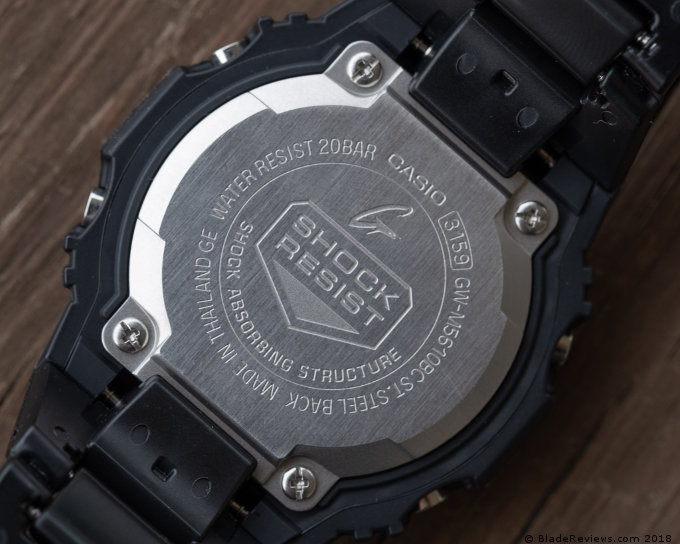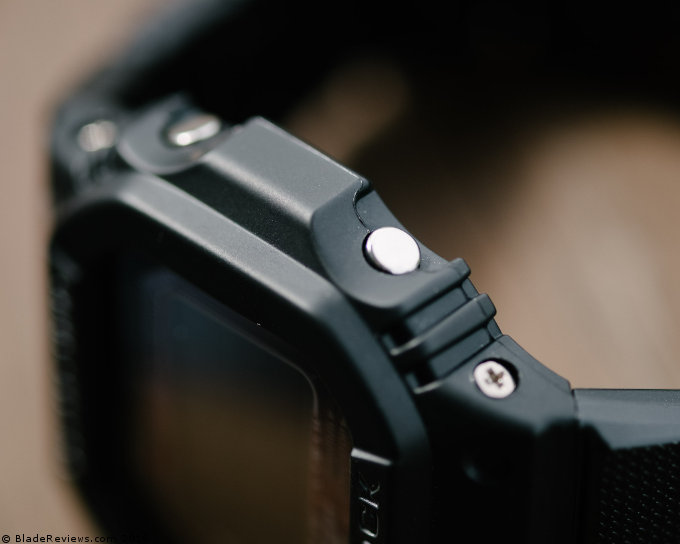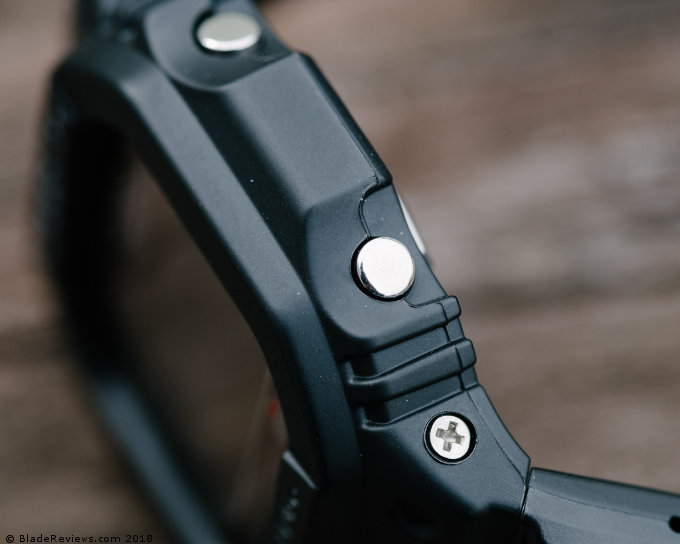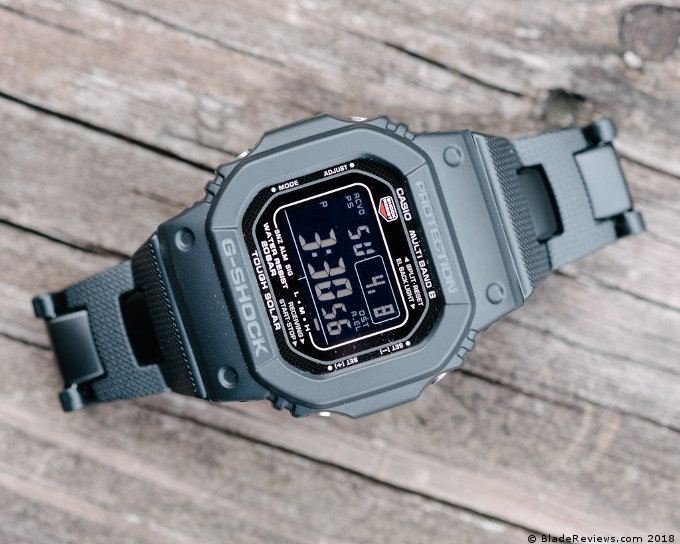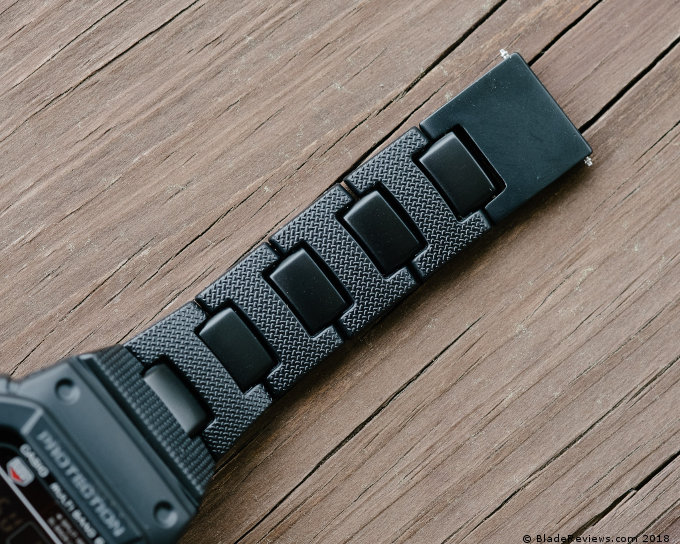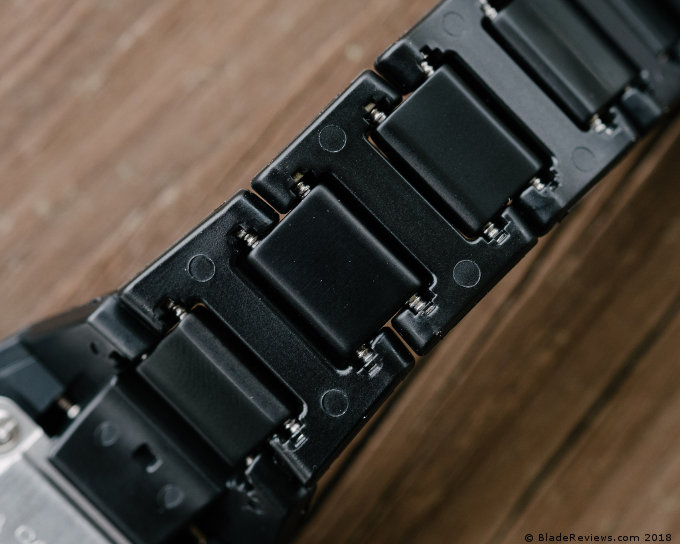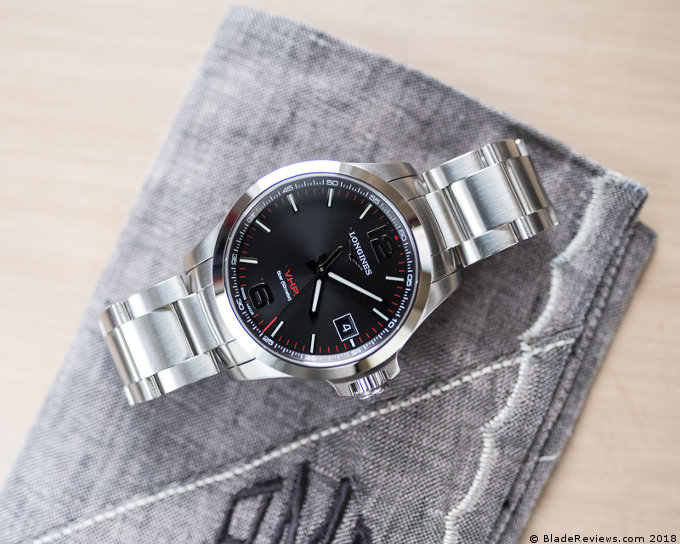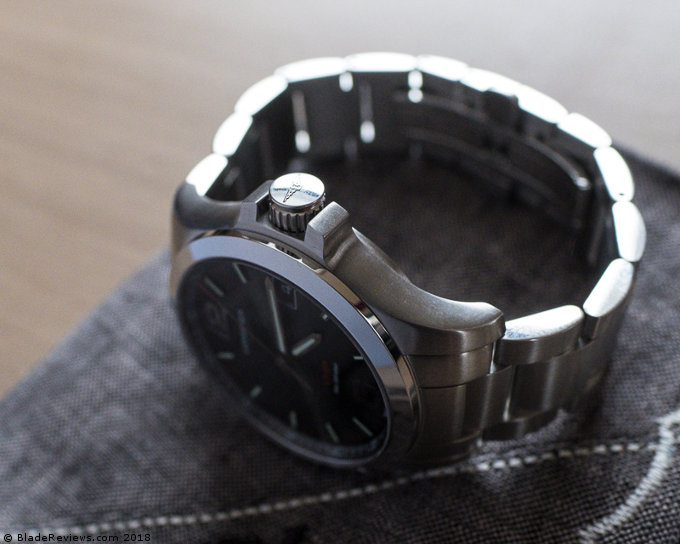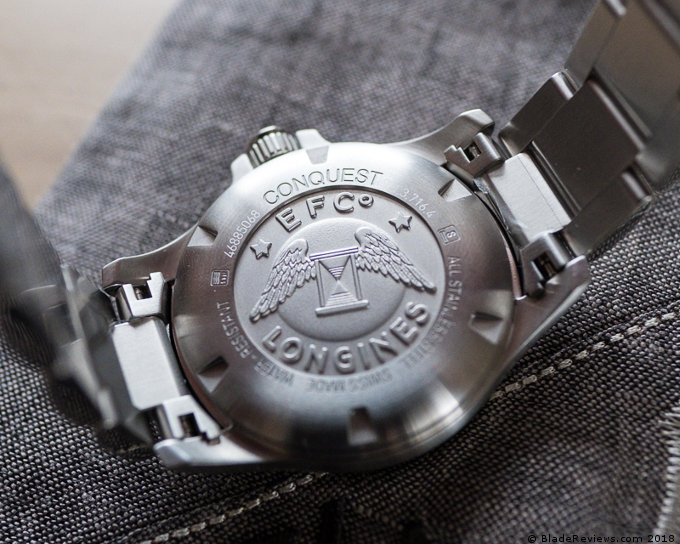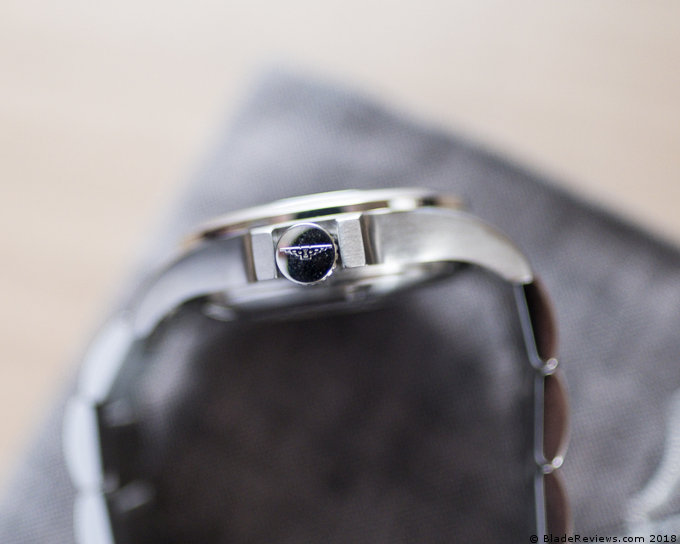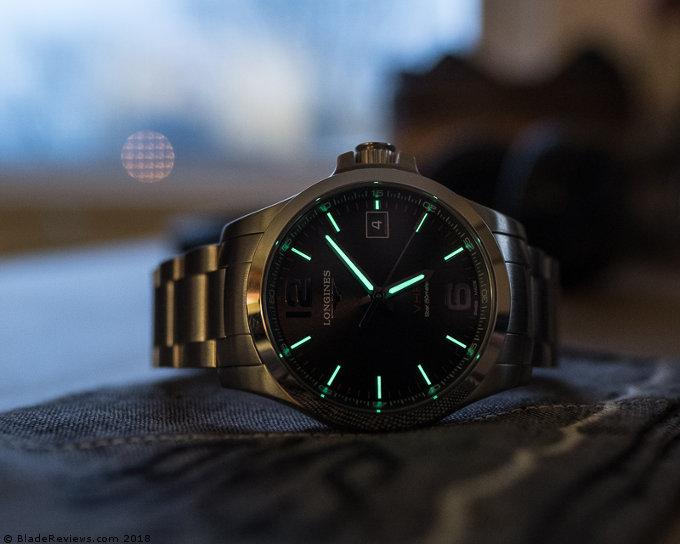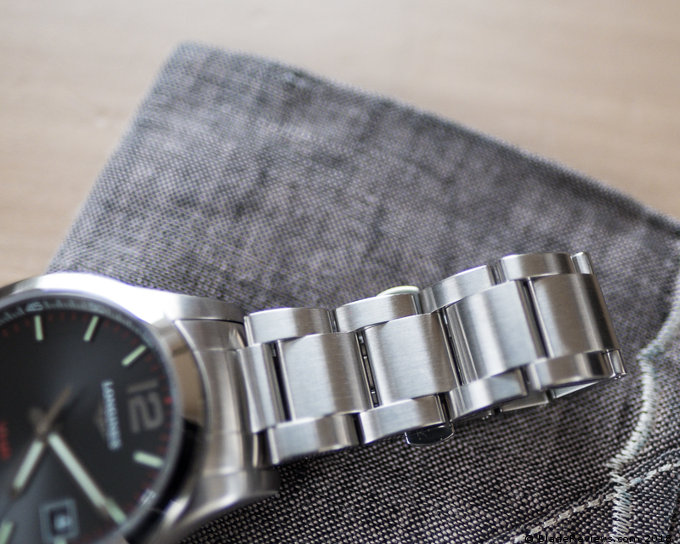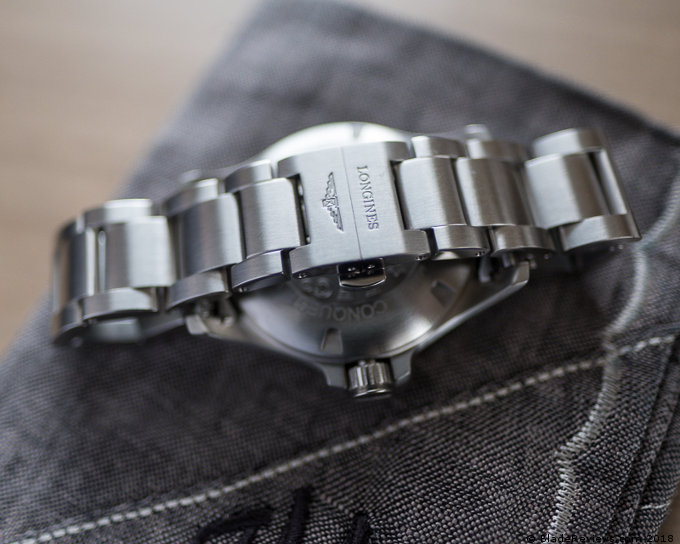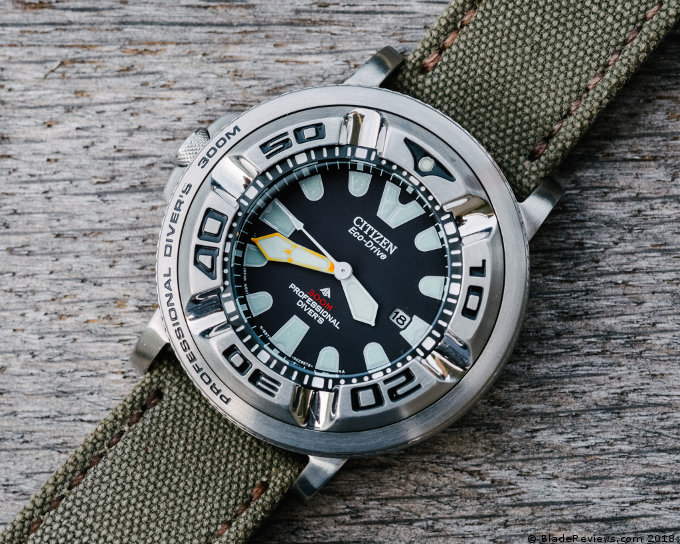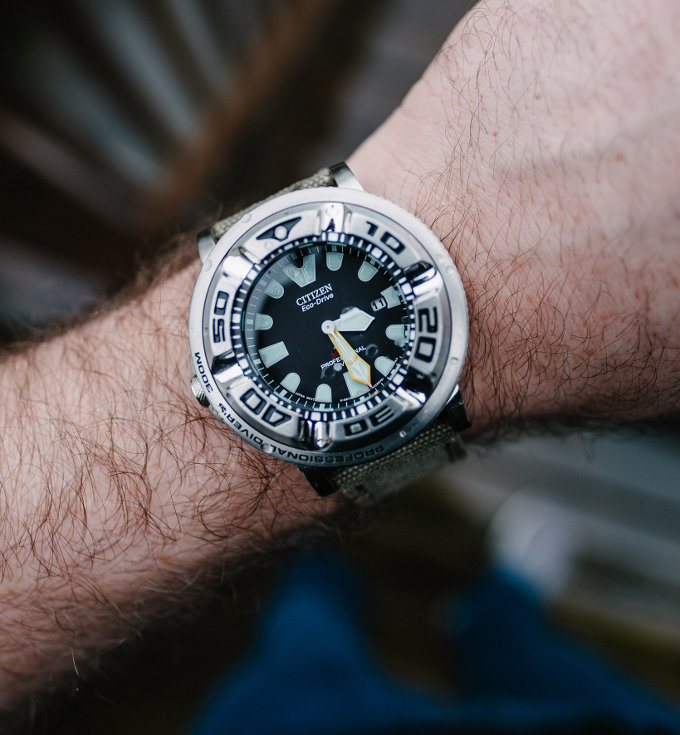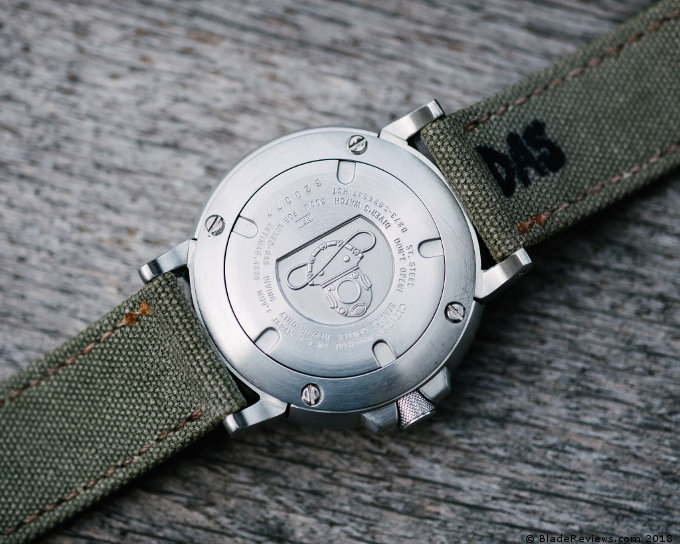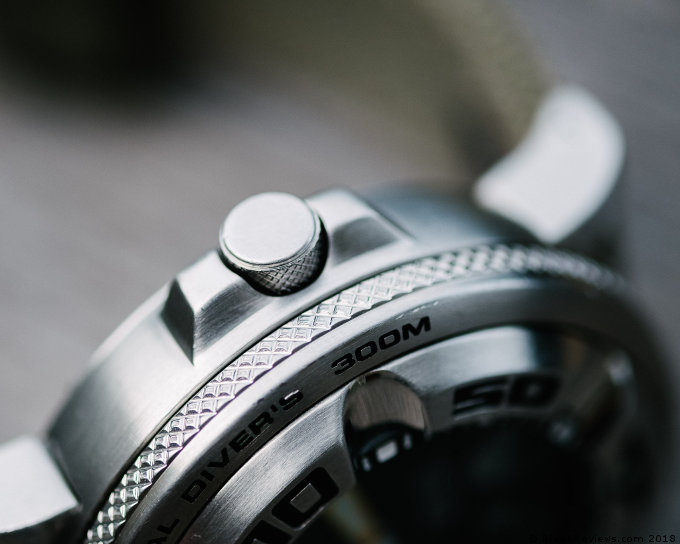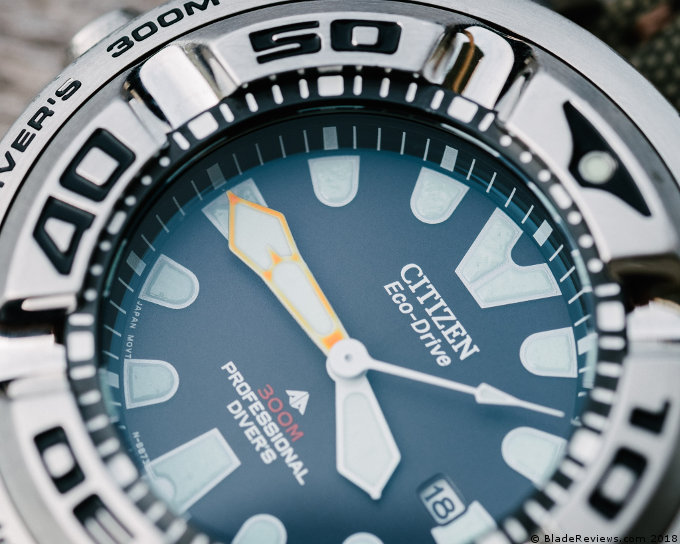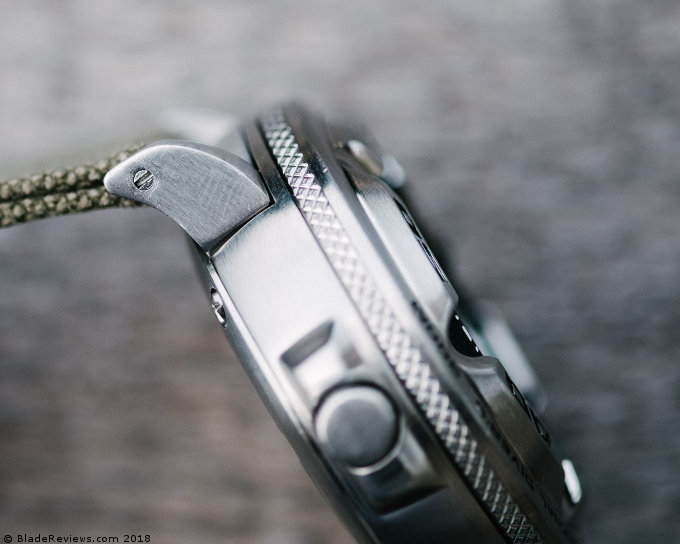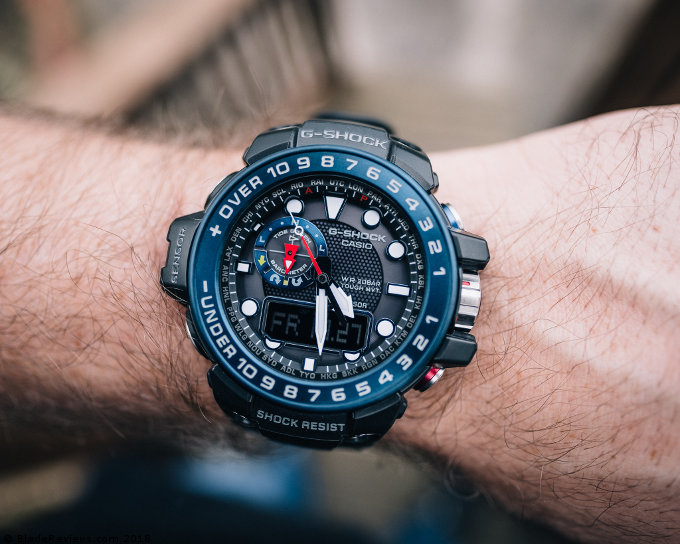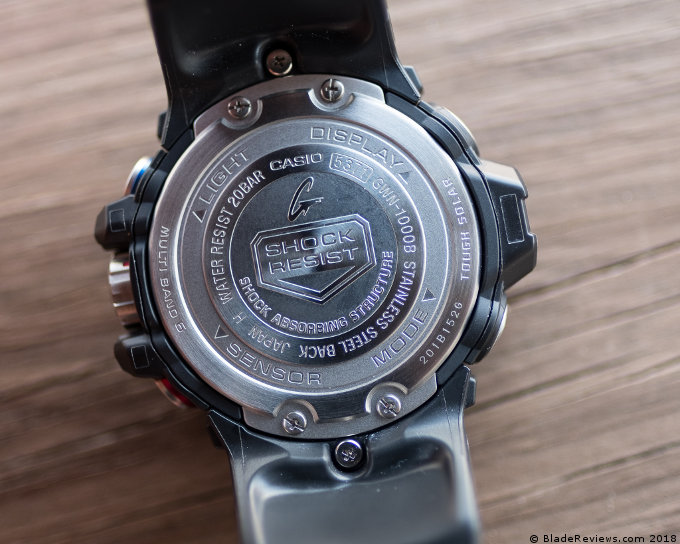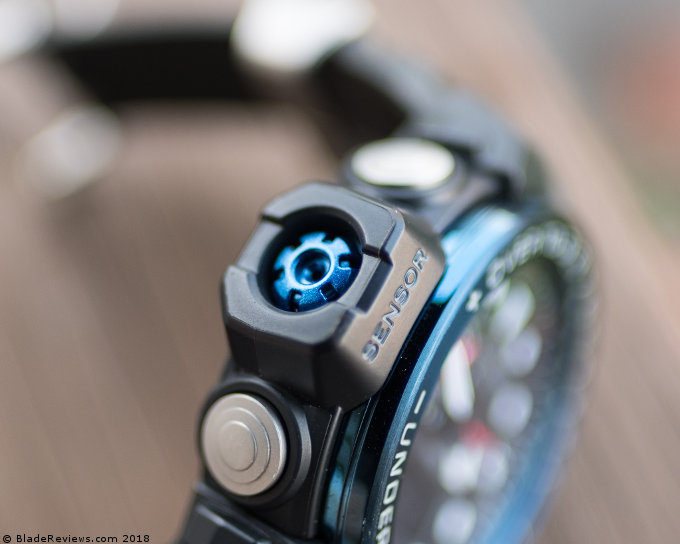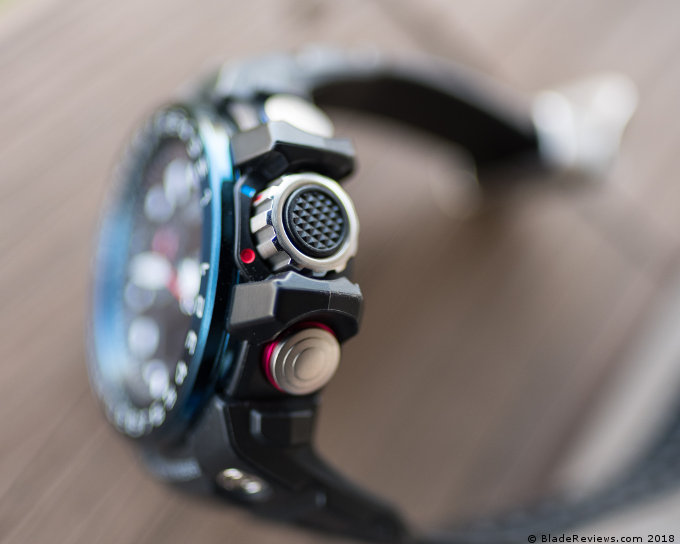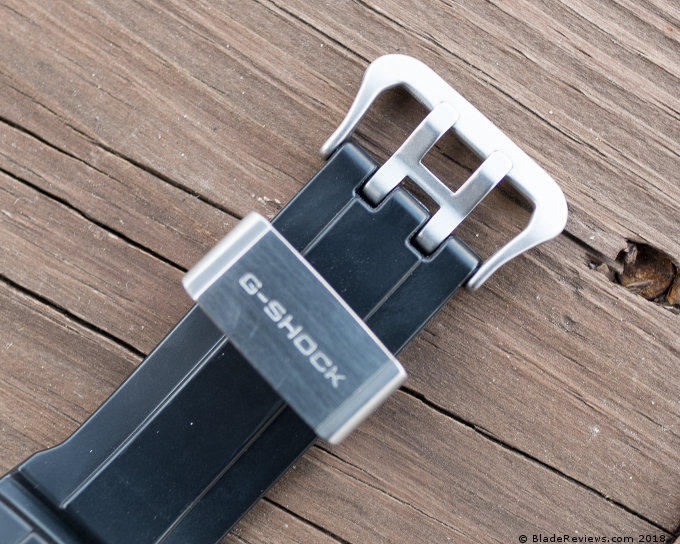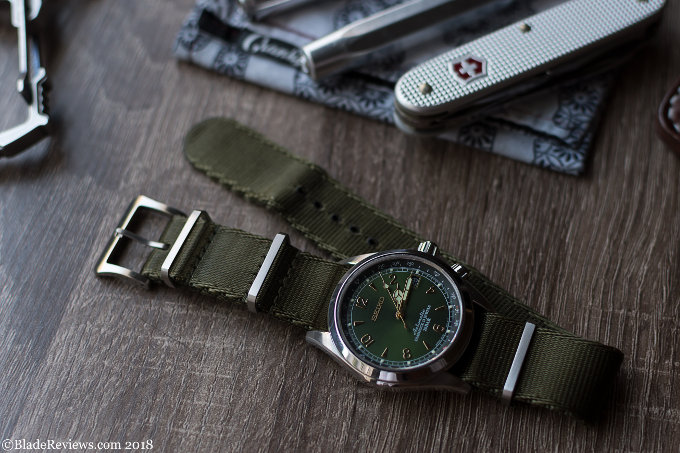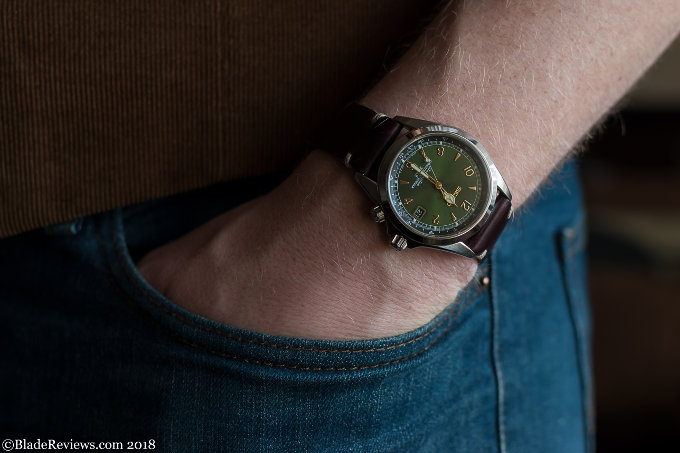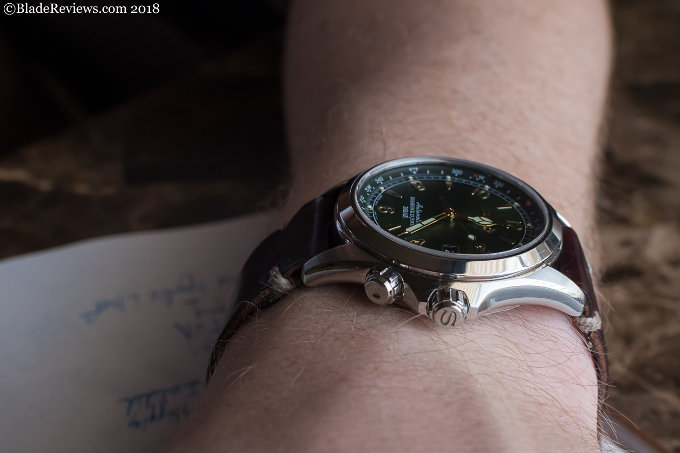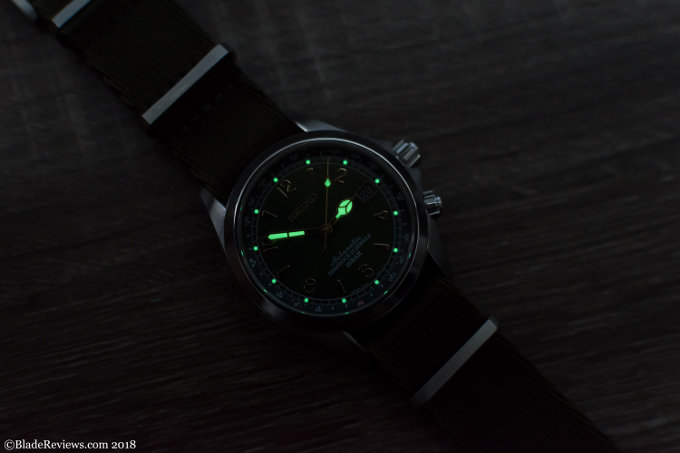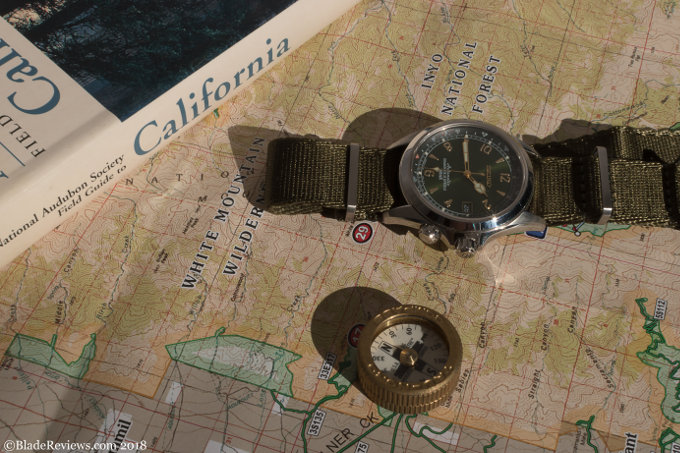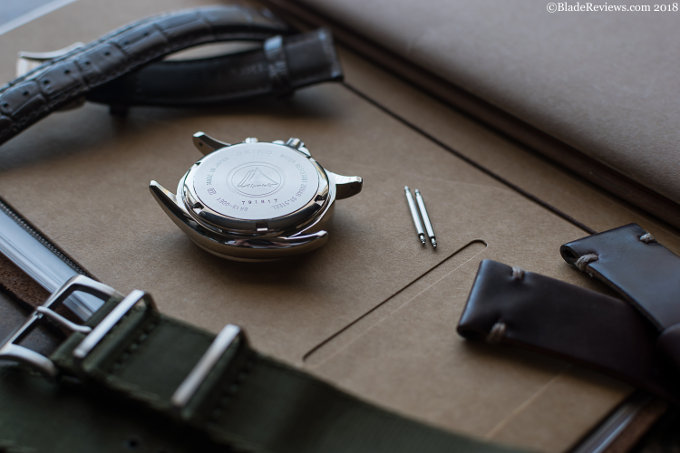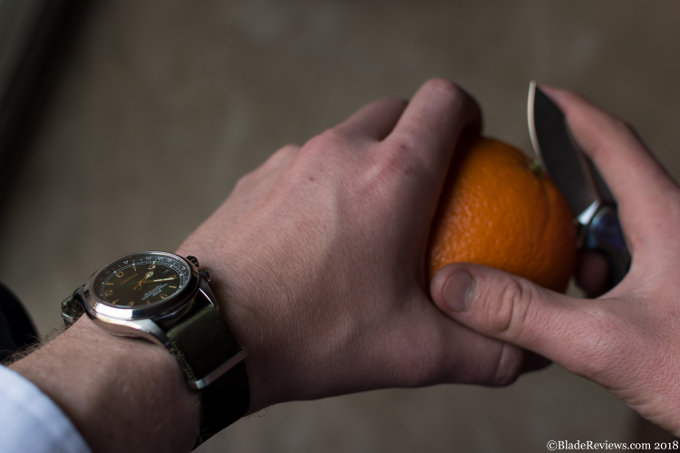I’ll never forget my first time walking into an Omega boutique and looking at all the shiny watches. A friend of mine, the one that initially introduced me to watches, took me there to admire his grail and ultimately discover a few of my own. Since that time I’ve had the privilege of owning and wearing several Omega watches and my buddy has attained (and daily wears) his grail Planet Ocean. In fact, my first ever “nice,” watch was an Omega Seamaster GMT 2534.50 that I wore for a long time, but ultimately sold for reasons that escape me now.
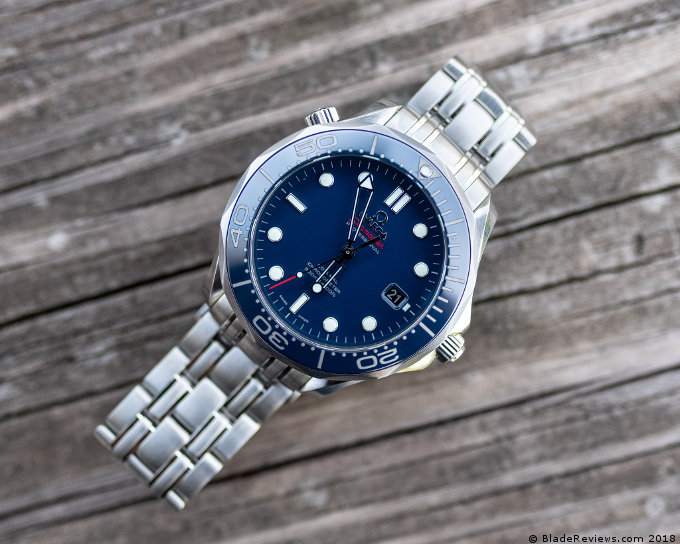
Buy the Omega Seamaster 300M Ceramic at Jomashop
Since then I’ve owned several versions of the classic wave dial Seamaster, numerous variations of the Speedmaster, and even a Planet Ocean but all of this to say… For some reason, I am drawn back to Omega, like a moth to the flame… That brings me to my most recent acquisition, the Omega Seamaster Diver 300 Ceramic. The most modern iteration of the Seamaster Professional series (although soon to be ousted by the new—new wave dial coming from Basel this last March). Before we get too far, let’s go over some specs:
(All Measurements are my personal measurements and may differ from manufacturers specs)
- Case Width: 41.5mm
- Case Thickness: 13.1mm
- Lug to Lug: 47.3mm
- Depth Rating: 30Bar (300m)
- Weight: 5.9oz on the bracelet
- Movement: Omega 2500D Co-Axial Movement
- Lug Width: 20mm
Fit
There are some watches that really feel like the manufacture nailed some sort of “golden-mean-symmetry” balance and created a watch that just works on the wrist. Other’s work fine, but have some minor comfort issues that you have to overlook like, the crown digging into your hand, or the lugs being overly long and overhanging your wrist… but the SMPc hits those special measurements.
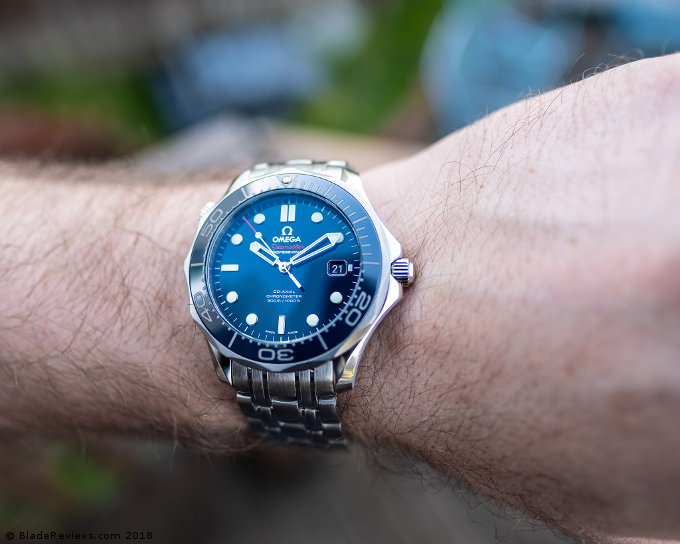
This watch is a dream to wear, with lugs that gently drape over your wrist and a thickness that keeps the watch from getting in the way of your day to day life. I think this is what keeps pulling me back to the SMP series—they really are a joy on the wrist.
Movement
The Omega 2500 Co-Axial movement has been around since 1999 and was Omega’s first wide-scale implementation of using Co-Axial movements in their watches. The 2500 is also not without its flaws and issues. There are five generations of the 2500 starting with the 2500 itself and then progressing to the 2500A, B, C, and finally D.
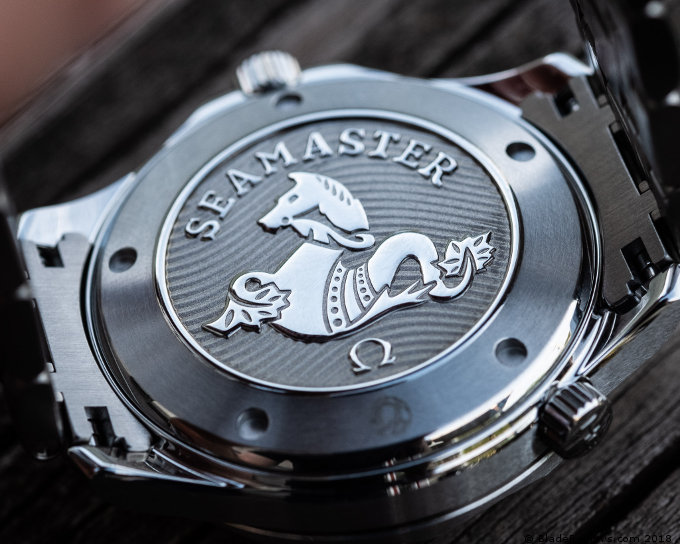
Some of these earlier movements suffered from some rather serious performance issues. Instead of chronicling all the reporting that has been done on the generations of the 2500 movement, and opinions that have been spread around about whether the C generation is reliable, or if the D is the only one to buy, I’ll say this: I’ve owned a couple watches with movements that were derived from the same 2-level coaxial technology. One of them was an early on Co-Axial Speedmaster that DID have issues and needed to be serviced. All of the rest have been perfectly fine.
In addition to this, the SMPc’s were released after the 2500D movements were released, and they all feature the new, reliable design of this Co-Axial movement. So strictly speaking if you buy the newest ceramic bezeled version of the Co-Axial Seamaster, you’re getting the latest version of the movement, and there’s nothing to worry about. In addition to that, I can say that my watch is keeping phenomenal time, gaining roughly 1.5s/day. Hard to beat that.
Case and Crown
The SMPc’s case is pretty straightforward with nice brushing along the sides, and polished twisted bevels on the lugs. The thinness of this case is pretty remarkable, and as I said in the fit section above, really makes this watch a joy to wear. The case-back is also pretty good lookin’ featuring Omega’s trademark Hippocampus and the laser etched Omega logo along the side.
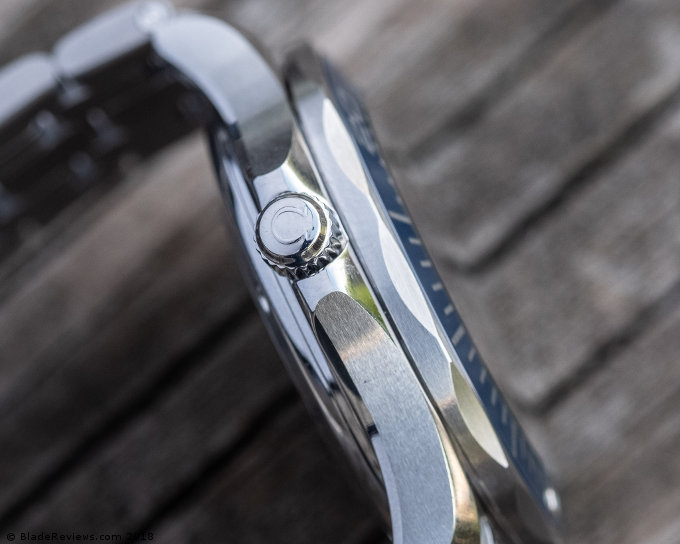
As for the crown, the Seamaster has two, one primary crown at 3 o’clock that you’d expect, and the one for the Helium Escape Valve at 10 o’clock. The crown is signed with an Omega logo and nicely textured to good grip when loosening it screwing down. The crown guards on these Omegas have always struck me as pretty interesting. They almost appear to rise off the side of the watch and gently hug the crown. There’s not much to say about the HEV crown at 10, except that you’ll never use it unless you want to fidget with something, and some people get some real heartburn over it being there at all. I’ll let you decide for yourself.
Dial, Bezel, and Crystal
As always, top-down: The domed sapphire crystal is very well executed on this watch. Omega does a great job with the AR coatings, and in the right light, it can look almost as if the crystal isn’t there. Also, while it is domed, it doesn’t stick up so much that it will be a “snag-hazard,” there’s nothing that’s gonna protrude on this watch.
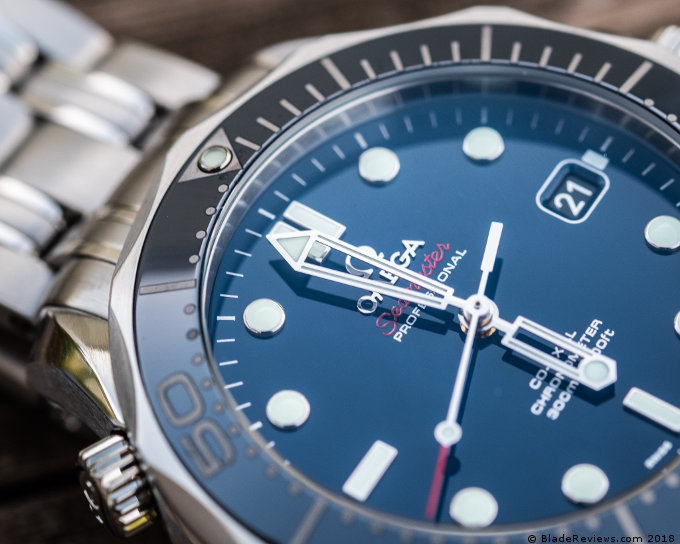
The bezel is where the modernity of the new SMPc’s starts to show itself. As the “c” would suggest in the name, these bezels are ceramic with a sort of matte grey numeral all the way around. There is also a lume pip at the 60-min mark that generally sits at noon. This bezel looks gooooood. The ceramic matches the deep blue (or black if that’s your style) of the dial perfectly and shows a ton of complexity as the light plays across it. It’s also a 120-click rotating bezel that’s a joy to actuate, snapping into each half-minute position with positive authority. While I would have loved to see some additional lume on the bezel like the Pelagos has, it would largely be vestigial and I am pleased as-is.
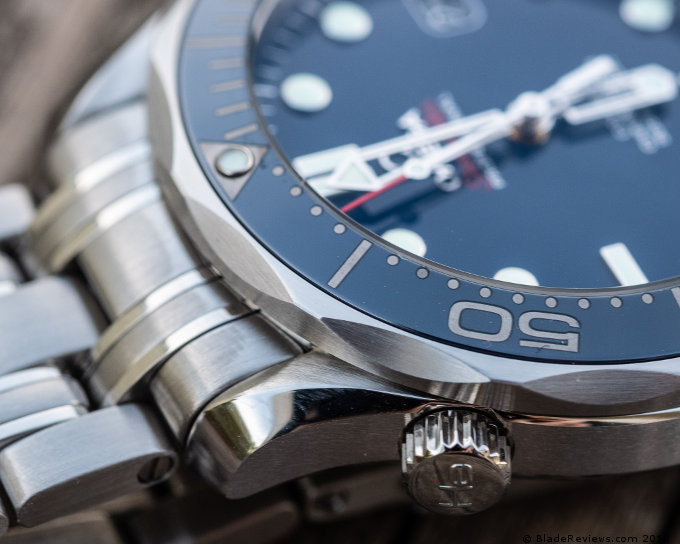
And the dial; as you look at the watch you’ll begin to see some subtle changes from the older non-ceramic Seamasters, and really, you should as there are nearly 20-years that separate the designs. The hour indices are applied with beautifully polished (I assume) steel surrounds, filled to the brim with lume. The Omega logo just under the noon-double-indices is applied and polished, as is the “Omega” beneath that. The depth of the dial’s color is also quite something to behold as well. I’ve always liked the wave dials, but the deep glossy blue dial is superb.
The lume itself is worth remarking on, Omega always does a good job on lume. On the SMPc they’ve mixed lume colors, with the primary color being blue on the hour hand, and indices, but the minute hand and diving bezel pip’s lume is green. A cool touch if you ask me.
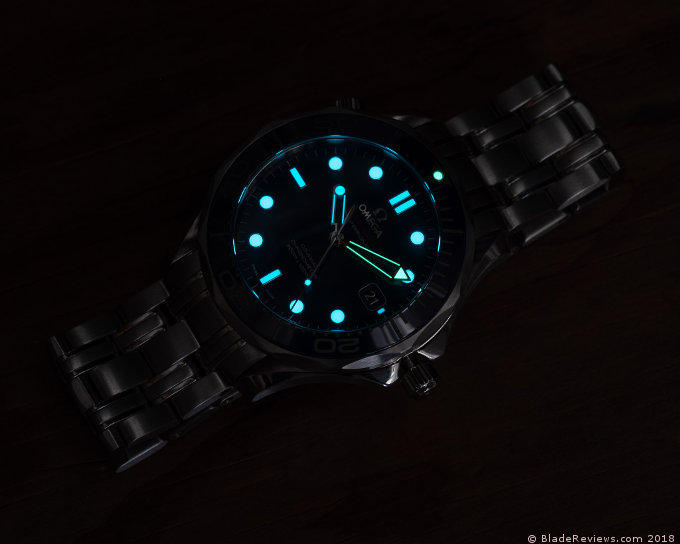
I wanted to specifically address the hands on this watch. The skeleton hands have been a hang-up for me, and probably been the biggest reason I’ve avoided buying this watch for years. I still do not like the skeleton hands from the older wave dialed versions of the SMP, but the newly updated handset on the SMPc are excellent. Polished, with amply applied lume they catch the light in the same way as the applied indices and Omega script/logo. All this to say, the SMPc has converted me to the skele-hands, at least somewhat.
Strap/Bracelet
Omega’s bracelets have always been excellent. They articulate nicely and drape well over the wrist. This bracelet is no different. It’s slightly dressier than the “Speedy Bracelet” the Speedmaster or 2254.50 comes on, but the varying brushed and polished surfaces are nice. Omega has also moved away from pin/collar construction for screw links. That’s always good. This watch will also be amazing with a NATO strap if you want to trend a bit more on the casual. side.
Omega Seamaster Diver 300M Ceramic Review – Final Thoughts
So, all of this to say, I am extremely impressed by the Omega Seamster 300M in Ceramic. Omega always does a good job, but it’s easy to see here why this model has remained a classic and has also remained largely unchanged in design for years. Omega has made some small improvements with each iteration, but no drastic changes. That being said, it’s worth looking into the newer version coming out later this year (2018) to see if perhaps you want to wait for that instead of grabbing one of these right now. Either way, you’re going to wind up with a watch that will serve you for years to come.
- Round watch in stainless steel featuring blue dial with contrasting stick and dot markers
- 41 mm case with synthetic-sapphire dial window
- Automatic self-wind movement with analog display
- Stainless steel link bracelet with fold-over clasp
- Water resistant to 300 m (984 ft)
Editor: I recommend purchasing the Omega Seamaster Diver 300M Ceramic at Amazon or Jomashop. Please consider that buying anything through any of the links on this website helps support BladeReviews.com, and keeps the site going. As always, any and all support is greatly appreciated. Thank you very much.
Also, if you like the watch reviews, here is a link to all our watch reviews.
